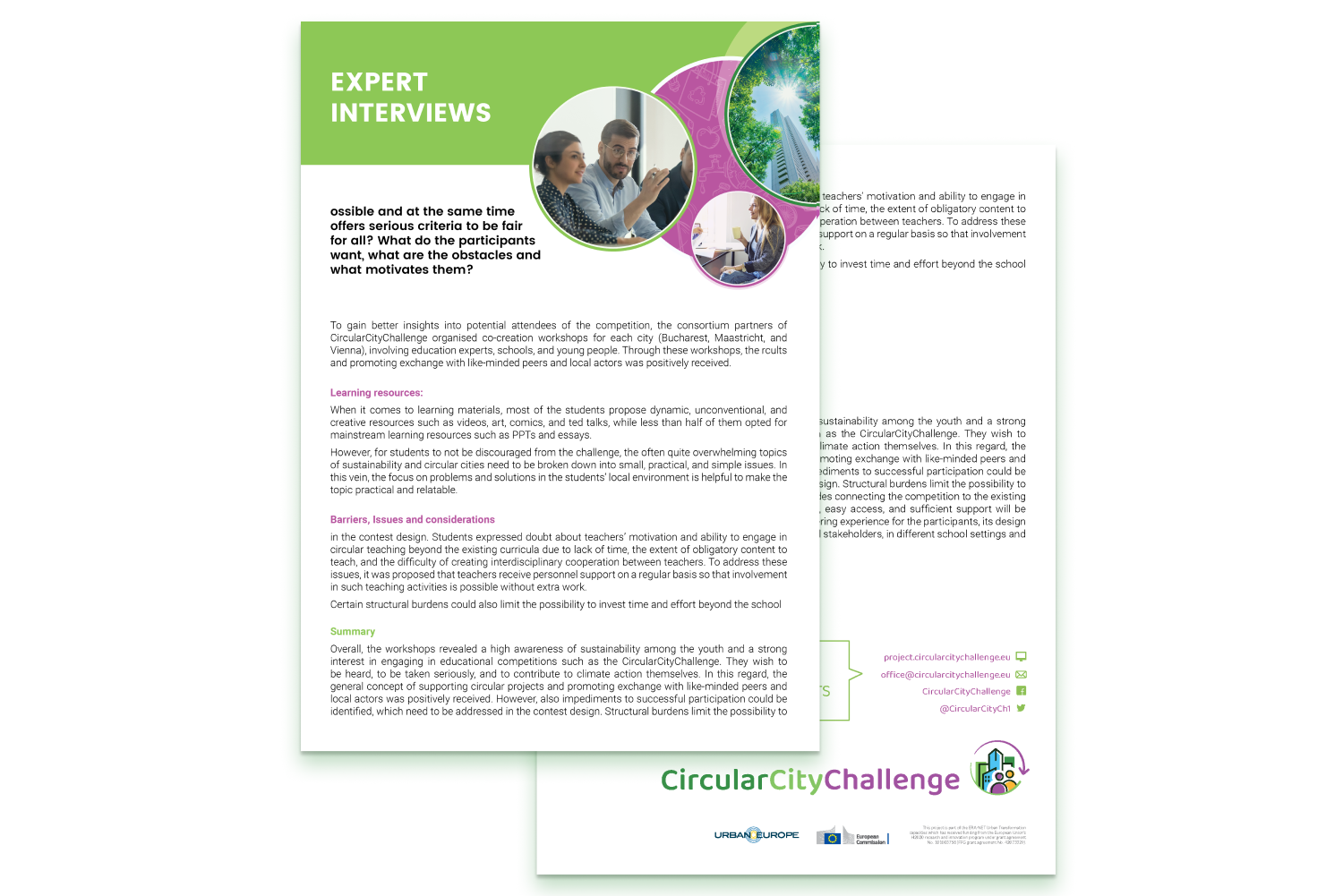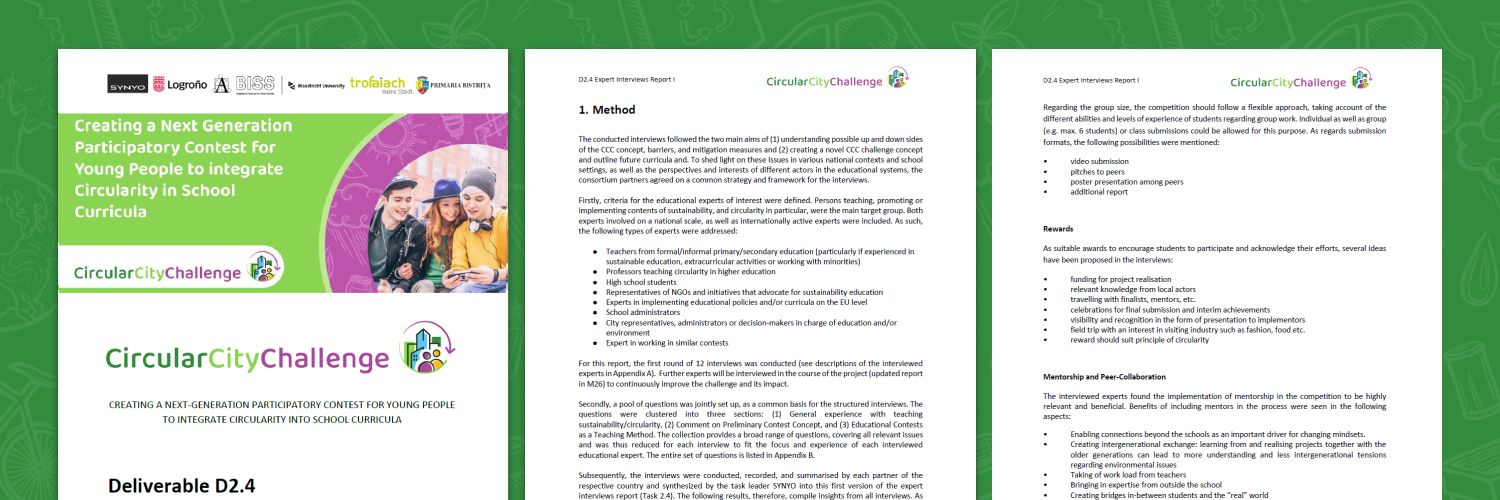
EXPERT INTERVIEWS

Experts' talk about the real needs in sustainability education
In the long term, the aim of the CCC competition is to design a new curriculum that can be used by schools and teachers to integrate sustainability and circularity into the curriculum on a permanent basis. But how can we create an inspiring contest that enables both teachers and students to participate successfully? How can we integrate the challenge into existing school contexts and enhance sustainability education?
The CircularCityChallenge is dedicated to developing a competition-based approach to teaching circularity and thereby improving sustainable development education in future high school curricula. For this purpose, the project consortium reached out to relevant experts from the field of education to hear their perspectives on the CCC concept.
Teaching circularity
In the interviews, cross-disciplinary thinking and transversal skills (such as media competence) were highlighted as key requirements. Materials should address circularity in a balanced way, addressing the severity of the issues at hand, while conveying optimism. Individual agency should also be pointed out, without, however, neglecting the bigger picture. The complex and abstract matter of sustainability needs to be broken down into local contexts, practical examples and relatable everyday experiences. Awareness and responsibility should be promoted not only among the youth but equally importantly, among teachers.
Designing an impactful contest
In order to create an inclusive and impactful pan-European contest, students and teachers with different abilities, interests and backgrounds need to be considered. Experience with project-based and teamwork as well as English proficiency might vary substantially. Possibly the largest burden lies in the lacking time and resources, of teachers in particular. It will therefore be crucial to integrate the contest into existing teaching activities, to keep the extra (administrative) effort low and to support teachers in the implementation as best as possible.
In the eyes of the experts interviewed, the actual implementation of young students’ ideas should be a central concern of the contest. In this regard, peer-to-peer exchange, connecting with local actors and meaningful prizes that support the sustainability interests of students should be strived for.
Conclusion
Overall, there might not be a one-size fits all approach, since skills, experience, organisational settings and resources vary substantially both across and within schools. Also, the idea of teaching sustainability is not always achievable given the current workload of school staff and the everyday pressures of students. The valuable recommendations gained from the experts will be used to create a competition that is flexible to different school situations, provides clear guidance and supports young students share their perspectives on circularity across Europe.
